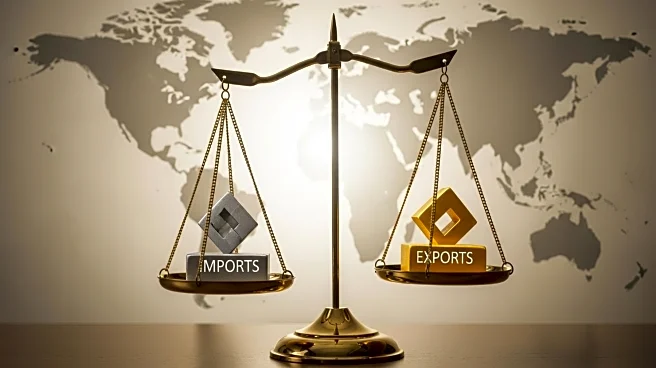What's Happening?
The U.S. current account deficit experienced a record contraction in the second quarter, decreasing by $188.5 billion to $251.3 billion. This significant reduction was driven by a decrease in imports, particularly nonmonetary gold, consumer goods, and industrial supplies. The deficit now represents 3.3% of GDP, the smallest share since the third quarter of 2023. The Commerce Department's Bureau of Economic Analysis reported these changes, highlighting the impact of President Trump's tariffs on trade dynamics. The tariffs have led to fluctuations in goods imports, affecting GDP calculations.
Why It's Important?
The narrowing of the current account deficit is a critical indicator of the U.S. economy's trade balance and overall economic health. A smaller deficit suggests improved trade conditions, potentially boosting domestic production and employment. However, the tariffs imposed by President Trump have introduced volatility in trade patterns, raising concerns about long-term economic stability. The deficit's reduction may temporarily alleviate pressure on the U.S. dollar, but ongoing tariff impacts could challenge future growth prospects.
Beyond the Headlines
The current account deficit's contraction reflects broader geopolitical and economic shifts, including the influence of tariffs on global trade relations. The unpredictability of U.S. trade policies under President Trump has raised questions about the dollar's role in the global monetary system. As tariffs continue to affect import and export dynamics, businesses may face increased costs, potentially leading to higher consumer prices and inflationary pressures.











